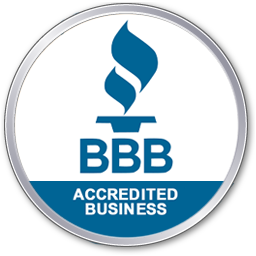Executive Summary
- Routinely executing well water testing can help you protect homeowners from potential health risks and guarantee compliance with state and Environmental Protection Agency (EPA) guidelines.
- Well water quality tests can help you identify contaminants, such as bacteria, nitrates, heavy metals, and volatile organic compounds (VOCs).
- Although basic at-home well water testing kits are available, relying on a professional who performs extensive laboratory tests can ensure the highest level of accuracy.
- If your test results necessitate remediation efforts, you should consider installing a new filtration system or trying other treatment methods like chlorination, UV purification, or water softeners.
Understanding What Goes into Well Water Quality Tests
Well water flow rate testing may be at the front of homeowners’ minds, considering it is hard to ignore poor water delivery from your well. However, it is important not to neglect a well water quality test, which can help you find hidden issues like the presence of coliform bacteria, a common contaminant that can be found in a well water sample. By performing annual quality tests, you can identify potentially dangerous organic compounds in your water supply before health concerns arise.
Some people opt for basic at-home tests to save money, but a professional-led well water quality test with extensive laboratory analyses can generate more accurate results that facilitate informed decision-making to keep you and your family safe from common contaminants like bacteria, nitrates, and heavy metals.
This guide can help you learn what to expect during a well water quality test and how to properly handle or submit water samples, allowing you to tailor your expectations and plan accordingly. Still, you should contact a trusted environmental specialist to get tailored guidance based on your property’s needs.
Why is Well Water Testing Important?
Every home with a well should schedule routine water quality testing to ensure compliance with water safety guidelines set by the Environmental Protection Agency (EPA) and state-specific organizations like the Oregon Department of Environmental Quality (DEQ). By adhering to relevant policies and recommendations, you can avoid common contaminants that can otherwise pose health risks.
According to EPA, some examples of health risks that contaminated well water can pose may include:
- Gastrointestinal issues, such as nausea, diarrhea, or stomach cramps
- Developmental concerns that may contribute to blue baby syndrome
- Neurological effects that impair brain function, especially in children
- Bodily complications like dry skin or eye irritation
- Organ damage following prolonged exposure/consumption
Thankfully, early detection through regular testing can help prevent the issues above and, in turn, save some homeowners from costly treatment approaches.
What Common Contaminants Are Found in Well Water?
In Portland, bacteria, nitrates, and heavy metals are some of the most frequently seen contaminants in well water. These pollutants usually come from natural sources, agricultural runoff, or industrial activities. Read the considerations below to better understand these common contaminants and their potential impacts.
Bacteria
Certain microorganisms can pose health risks if they enter well water from soil, animal waste, or septic systems. Some common bacterial contaminants include:
- E. coli – Fecal-contaminated water can pollute water supplies with E. coli and spur gastrointestinal illnesses.
- Coliform bacteria – Soil or surface water containing the feces of warm-blooded animals can contain coliform bacteria that cause diarrhea, cramps, and nausea if it enters well water.
- Salmonella – Animal waste may also contain salmonella, which can generate food poisoning symptoms if traces of it are consumed in well water.
- Campylobacter – This type of bacteria is often found in agricultural runoff and can cause diarrhea if it enters the well water supply.
Although they are not considered bacteria, Giardia and Cryptosporidium are single-celled parasites that can cause intestinal distress and may be found in well water samples.
Nitrates
Inorganic compounds with nitrogen and oxygen atoms are known as nitrates. These compounds can enter well water through agricultural runoff, fertilizers, and septic systems. When consumed, they pose health risks, especially for infants. For instance, they can cause blue baby syndrome by interfering with oxygen transportation throughout an infant’s bloodstream.
Heavy Metals
Dense metallic elements that are usually toxic, even in small concentrations, can come from natural sources, industrial pollution, or corroded plumbing. Some examples of common heavy metals and their corresponding risks include:
- Arsenic – This naturally occurring heavy metal can increase the risk of cancer when someone consumes it over a long-term period.
- Lead – Old pipes can leach this element into water supplies, potentially causing neurological issues when consumed.
- Mercury – Often found in industrial waste, this heavy metal can affect the kidneys and the nervous system when ingested.
- Cadmium – Typically coming from mining runoff, this element may contribute to a higher risk of kidney damage if consumed.
- Chromium – This heavy metal originates from industrial sites and has been linked to cancer in some individuals who have consumed it.
- Copper – Typically coming from corroded plumbing, excessive levels of this element may cause digestive problems when ingested.
Testing for lead and other heavy metals in well water is essential to ensure the property’s inhabitants have safe drinking water.
Considerations for Testing Frequency
Knowing when to test your well water is crucial to promote early detection of common contaminants like bacteria, nitrates, or heavy metals. Consider the following recommendations when deciding when to schedule a well water quality test.
Recommended Testing Schedule
EPA recommends annual testing to find bacteria, nitrates, and pH levels in your well water. However, additional testing should be conducted approximately every three years for contaminants like heavy metals and VOCs.
Special Circumstances for Testing
In addition to the routine testing schedule mentioned above, EPA also suggests extra testing if any of the unique circumstances in the table below apply to your situation.
| Condition or Activity | What to Test for |
| Frequent stomach issues | Coliform bacteria |
| Lead plumbing on the property | pH, lead, and copper |
| High radon levels inside | Radon |
| Pipe corrosion | Corrosion, pH, and lead |
| Nearby farms | Nitrate, nitrite, pesticides, and coliform bacteria |
| Nearby mining activity | Metals, pH, and corrosion |
| Nearby gas drilling | Chloride, sodium, barium, and strontium |
| Local landfill, factory, or gas station | VOCs, TDS, pH, sulfate, chloride, and metals |
| Fuel odor near gas tanks | VOCs |
| Bad taste or smell | Hydrogen sulfide, corrosion, and metals |
| Stained fixtures or laundry | Iron, copper, and manganese |
| Salty taste from seawater or salted roads | Chloride, TDS, and sodium |
| Soap not lathering | Hardness |
| Worn-out water treatment equipment | pH and corrosion |
| A softener is used for hardness | Manganese and iron |
| Cloudy, frothy, or colored water | Detergents |
Types of Well Water Testing Options
There are several options when deciding how to conduct a well water quality test. Some people choose basic at-home testing kits due to their cheap pricing, ranging from $20 to $100. These at-home kits usually include test strips for pH, chlorine, nitrates, hardness, lead, and iron. They may also have bacteria test vials that change color if contamination is detected. Although they may be cheap and convenient, these kits may not detect all contaminants.
On the other hand, professional laboratory testing is more accurate and comprehensive, though it usually costs between $100 and $500 depending on your specific testing needs.
Some examples of common contaminants professional labs can detect are:
- Bacteria like E. coli or coliform bacteria
- Nitrates and nitrites
- Heavy metals, such as arsenic and lead
- Minerals that contribute to hardness like calcium or magnesium
- pH and alkalinity
- VOCs, including industrial chemicals and solvents
The testing capabilities and cost estimates mentioned above are not set in stone. Tests are constantly evolving, making it valuable to consult a trusted environmental specialist to know what to expect from your testing method.
Sample Collection Procedures
A qualified professional will take various precautions during a well water quality test to make getting accurate results easier. Some examples of steps an environmental specialist will take to guarantee water sample collection are:
- Using a clean container
- Choosing the most ideal sampling location
- Flushing the system before collecting
- Sanitizing the faucet
- Filling the sample bottle in a way that avoids air bubbles
- Labeling the sample
After collecting the sample, the individual needs to seal it tightly and keep it cool, storing it between 39°F and 50°F and avoiding direct light or heat. Submitting the sample within 24 hours and using insulation during transportation is best.
Submitting Samples to a Laboratory
Following sample collection, it is essential to choose a certified laboratory that can guarantee accuracy and regulatory compliance by accessing EPA’s state and territory webpages for certified drinking water testing laboratories. These labs may require additional information to accompany each sample submission, such as:
- Collection date
- Collection location
- Specification of which tests the submitter wants to be performed
- Property owner’s name and contact info
- Well type
- Well depth
By selecting an appropriate lab and attaching the right information, you can accurately verify that your property has safe drinking water.
Understanding Your Test Results
Interpreting water quality data is essential after your test results come in. Some common metrics that may show up in your well water quality results are:
- Contaminant concentrations
- pH level
- Hardness
- Turbidity
- Total coliforms
- Nitrate and nitrite levels
Comparing your results to EPA standards is essential to determine the safety of your drinking water. If your results suggest your water sample is contaminated, you may need to retest for confirmation, monitor water quality regularly, and report certain results to local organizations as needed. An environmental specialist can guide you through these processes to help you avoid unnecessary health risks or legal complications associated with contaminated well water.
Remediation Options for Contaminated Well Water
Thankfully, several treatment methods are available to improve well water quality, even following news of contamination. Consider the following approaches to address your well water issue.
Install Filtration Systems
You can install filtration systems in your well water structure to help you filter out common contaminants while maintaining a good flow rate. For instance, activated carbon filters may remove chlorine, VOCs, and pesticides, while a system that uses reverse osmosis can potentially eliminate heavy metals, salts, and microorganisms.
Implement Treatment Methods
Depending on the type of contamination at hand, you may be able to try incorporating additives into your water supply to solve the issue. Some examples of treatment methods that may be helpful include:
- Chlorination can disinfect bacteria-contaminated water
- UV purification may kill bacteria and viruses
- Water softeners can reduce mineral content and prevent scaling
Choose a dependable environmental remediation company by searching through reviews and relying on recommendations from people you trust to ensure your contaminated well water problem is resolved effectively and affordably.
Get a Quick and Efficient Well Water Test from Alpha
Scheduling a professional-led well water quality test can help you assess if a water sample is free of common contaminants like coliform bacteria or organic compounds that can present health risks when consumed. Although they may be cheaper, avoiding basic at-home testing kits is best when it comes to something as important as water quality. Testing from an accredited laboratory is the best way to eliminate errors and to pinpoint precisely which bacteria, nitrates, or heavy metals are present in your water sample.
Alpha Environmental is a reliable Portland-based environmental remediation company with decades of experience, ready to help you address your well-related concerns. Whether you have issues with your well’s flow rate or concerns about pollutants, our educated specialists can help you achieve peace of mind through expert testing services. Plus, our team also performs a variety of other assessments, such as indoor air quality testing, that can guarantee the rest of your property is also safe for inhabitants.
Contact Alpha Environmental to learn more about your well’s functionality and water supply.




